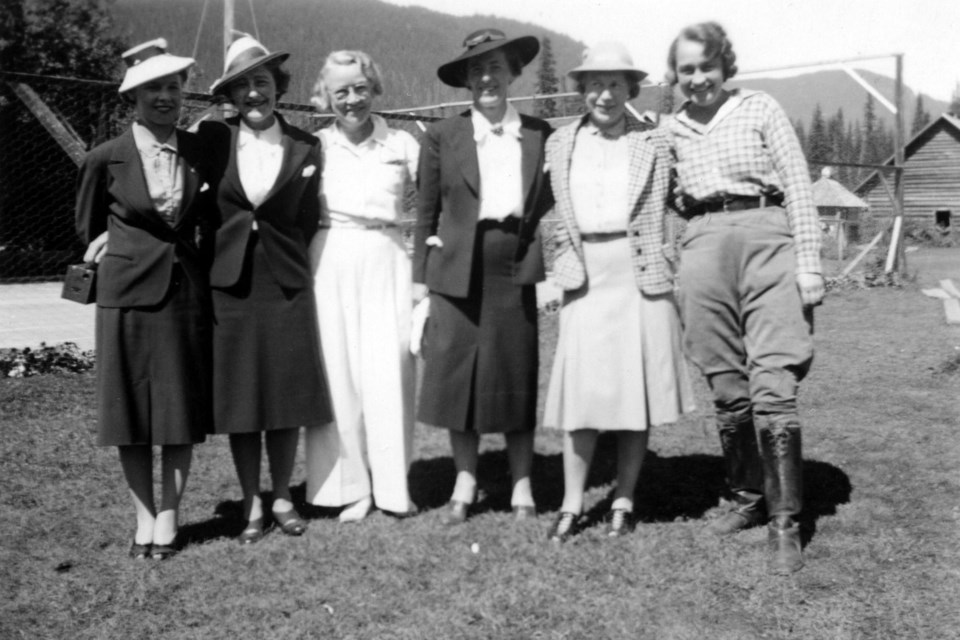Trousers, slacks, britches, pantaloons or jodhpurs. There was a time, relatively recently, when local women were challenging societal expectations when choosing to wear pants.
Many will be familiar with the picture of Whistler’s “first lady,” Myrtle Philip, in her checkered pants with a big smile and hands on her hips. The image has been immortalized on the side of the Whistler Museum along with many posters and pamphlets. What may surprise some is how shocking it was at that time for visitors from Vancouver to see a woman wearing pants.
When Myrtle first came to Alta Lake, now known as Whistler, in 1911, there was no highway or train line, and the journey from Vancouver was a difficult three days. The first day involved catching a steamship from Vancouver to Squamish. In Squamish, Myrtle and Alex Philip picked up packhorses and then spent the next two days on foot travelling over rough terrain, climbing around boulders and fallen logs, and weaving in and out of deep gullies. The trail was barely two feet wide and seldom used, but women were still expected to traverse it in long, heavy skirts, as per the fashion and societal expectations at the time.
As most would understand, hiking, horseback riding and working outside in long skirts is not very practical. However, you could not buy pants for women. Myrtle tried various men’s pants, including overalls, but did not like them. In an oral history from 1971, Myrtle explained the solution: she would make all of her own pants. “I had a pattern and then that’s what I wore all of the time,” she said. For many of the visitors from the city, a woman wearing pants was not a regular sight and was seen as rather scandalous by some.
Famed mountaineer Phyllis Munday, who lived in North Vancouver during this time, also had to explore her limited clothing options. Summiting more than 100 mountains during her career, including many around Whistler, she came up with a solution that ensured she did not face prejudice for wearing pants in the city. “You were never seen on the street with britches in those days, so we would wear a skirt over our britches. Then when you got to the foot of the mountain or the foot of the trail or wherever you happen to be, you took your skirt off and cast it underneath a log and there it would stay until you came down.”
Thankfully, societal expectations have changed in Whistler today, and women are not expected to ski, ride and hike in skirts and bloomers. However, this change was more recent than many people would expect. When the lifts were turning on Whistler Mountain in 1966, 55 years after Myrtle had first visited the valley, Renate Bareham lived near Myrtle on West Side Road. Between 1931 and 1976, the local school opened and closed regularly based on the fluctuating number of residents. For Renate, and many other kids in the valley, it was a long and snowy trek to get to the bus, followed by the bus ride to Squamish or Pemberton for school.
After the one-hour hike to the bus, Renate remembers, “at that time, you weren’t allowed to wear pants to school when you were a girl. So we would have to wear our pants over to the bus, then as soon as we got to school we had to change into our dresses or skirts.”
My appreciation goes out to those who challenged and continue to challenge the status quo. Thankfully things have changed, and women are not expected to ride the bike park in long dresses.




